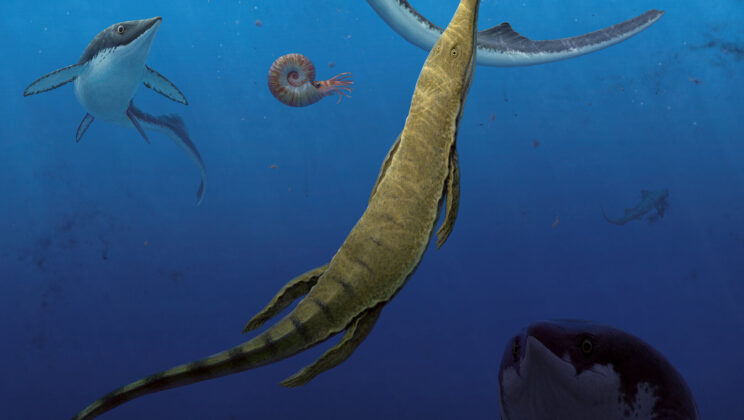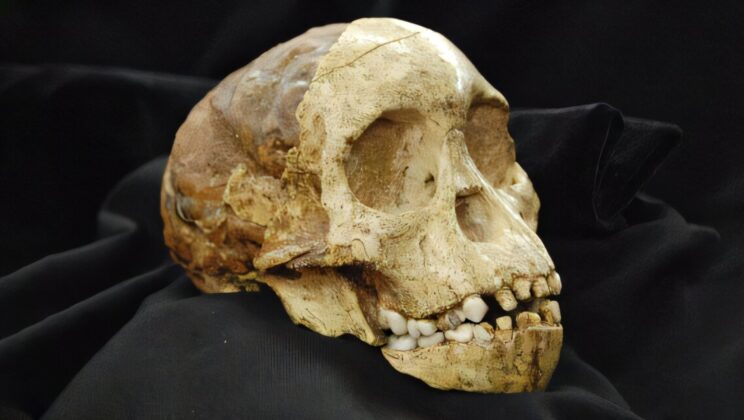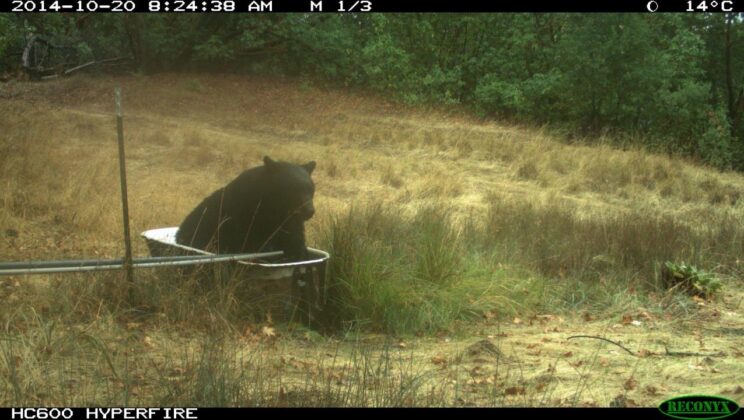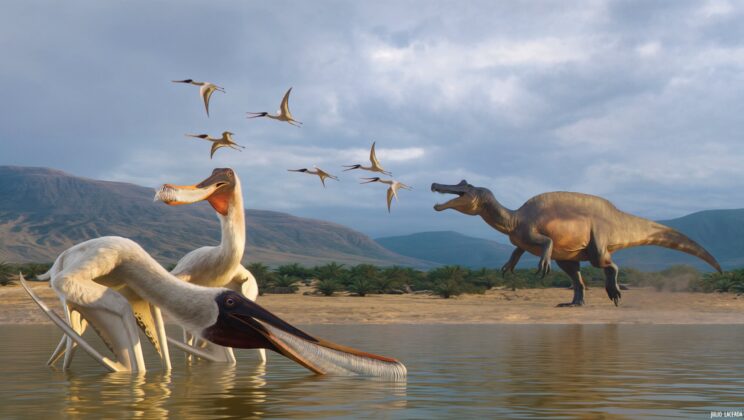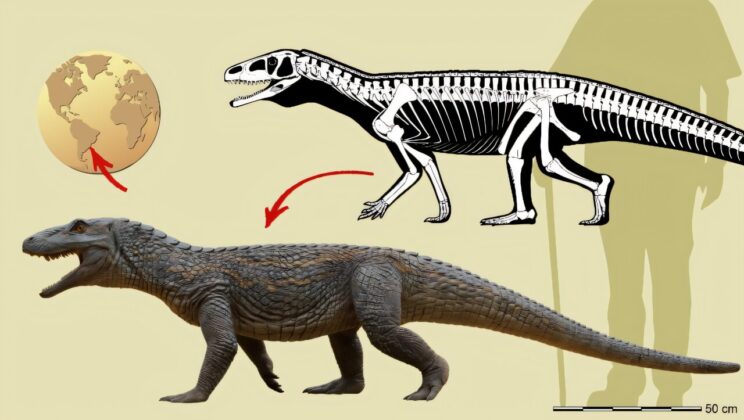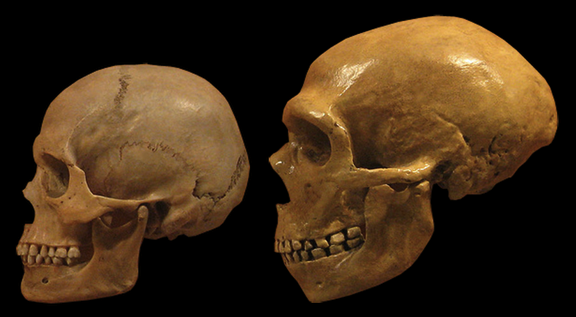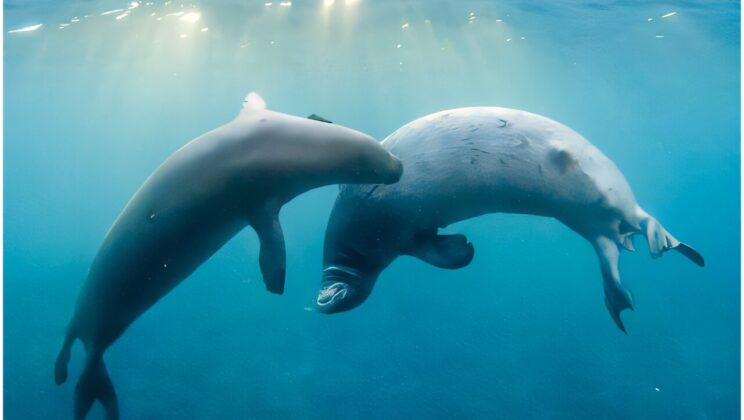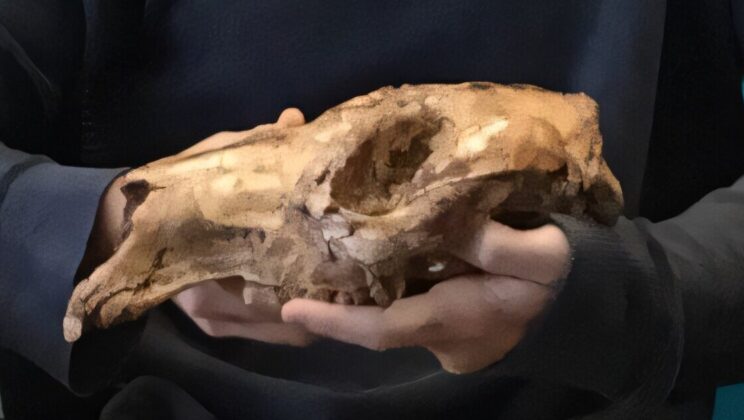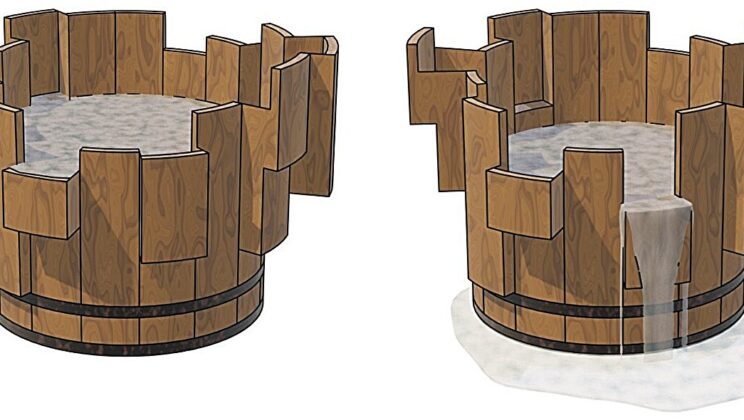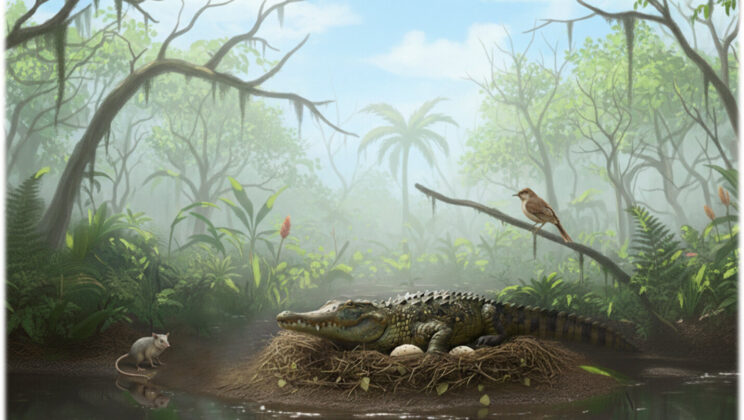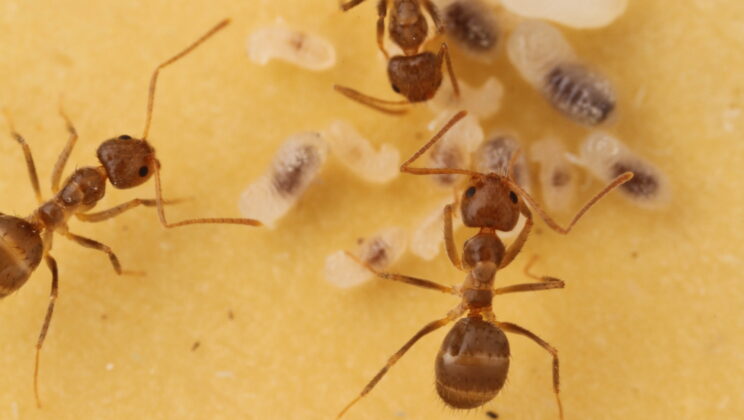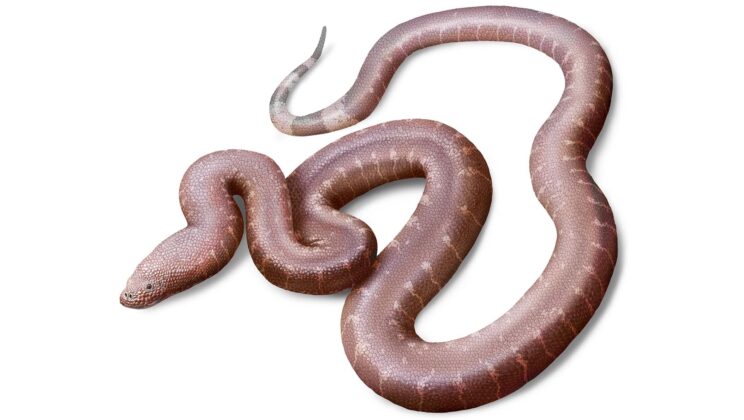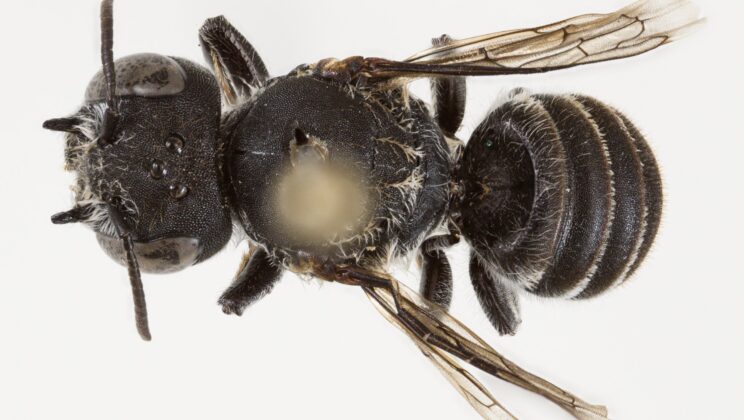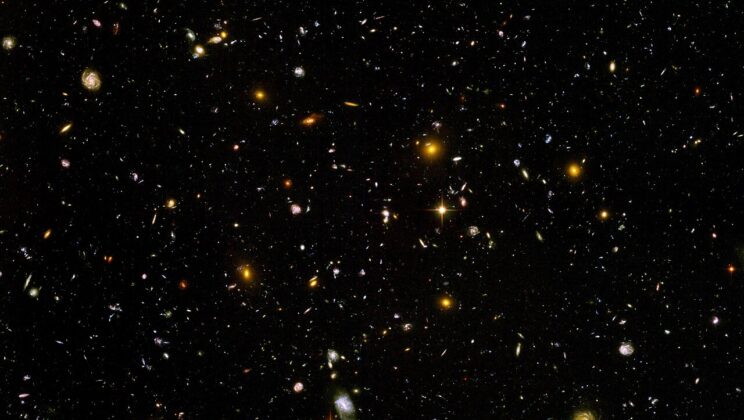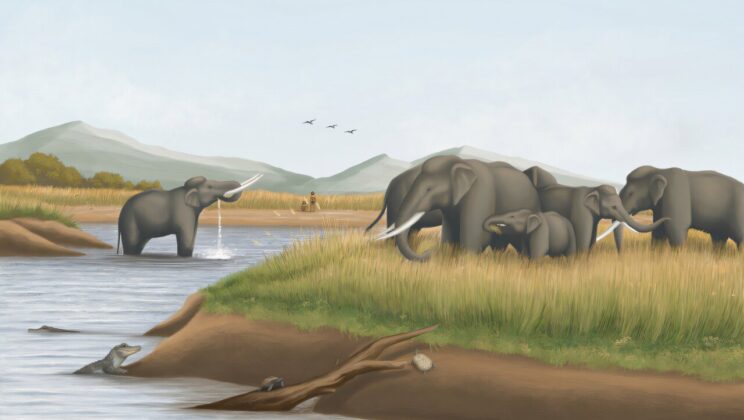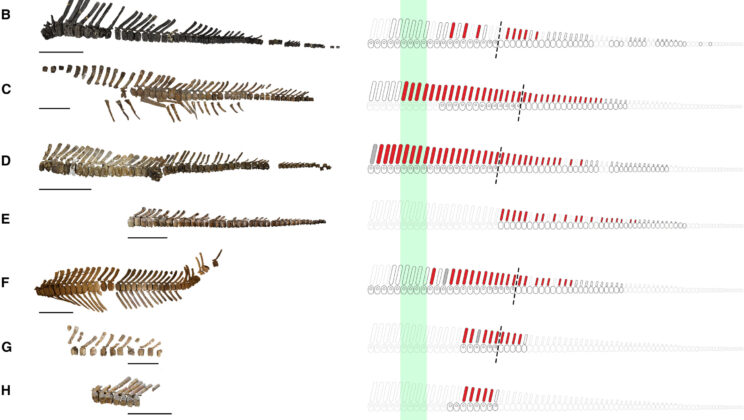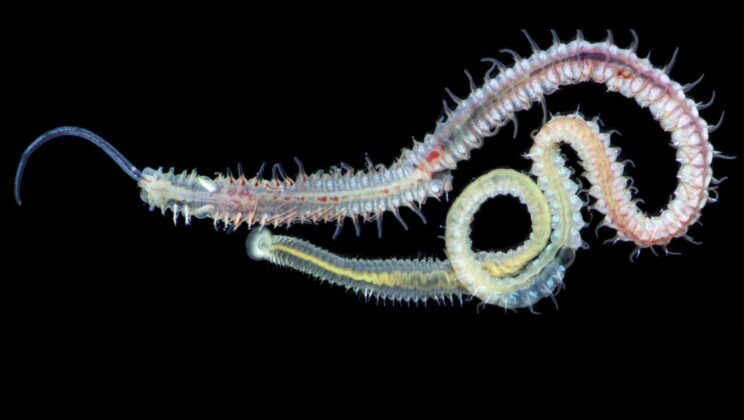The Arctic seems like an unlikely place to find the remains of an ancient tropical sea, yet beneath the cold…
Category: Biology
Scientists Discover Koalas Are Surprisingly Close Relatives of a Terrifying Ice Age Predator
At first glance, nothing seems more different than a drowsy koala perched in a eucalyptus tree and the marsupial lion…
The Taung Child Turns 100 — And Its Story Is More Explosive Than Ever
In 2025, the Taung Child — a small fossilized face and skull of a young hominin from South Africa —…
Scientists Find a Fern That “Grows” Rare Earth Crystals—A Game-Changer for Green Mining
In the humid, green folds of South China’s forests, a fern long overlooked by the world has quietly been performing…
Droughts Are Making Animals Fight Back — Scientists Reveal a Hidden Side of Climate Change
As droughts become longer and more frequent under the strain of climate change, scientists are uncovering a surprising ripple effect—one…
Scientists Discover a New Pterosaur Species Inside Fossilized Dinosaur Vomit
In the arid northeast of Brazil, far from the crashing waves of the Atlantic and deep within the sunbaked landscapes…
Scientists Discover a 240-Million-Year-Old “Fighter” Lizard That Preyed Like a Dinosaur
Long before the mighty roar of the dinosaurs filled the Earth, another kind of reptile ruled the ancient landscapes—armored, swift,…
Did Neanderthals Really Go Extinct—Or Did They Become Us? New Study Says They May Have Merged with Humans
Somewhere in our genetic code lies the echo of another kind of human—a species that once shared our lands, our…
Scientists Just Uncovered the Secret “Language” of Hawaiian Monk Seals Beneath the Waves
Beneath the turquoise waters of the Hawaiian Islands, an ancient song has been echoing for centuries—unheard, unrecognized, and nearly forgotten.…
Scientists Discover the “Original Kangaroo” That Changed Australia Forever
Deep in the heart of Australia’s Northern Territory, where ancient bones lie hidden in red earth and sunbaked stone, a…
Scientists Uncover a Hidden Law of Life That Explains Why Growth Slows Even in Abundance
Why does life slow down when there’s plenty to eat? It sounds like a paradox. In nature, from bacteria in…
Scientists Unearth Australia’s Oldest Crocodile Eggs in a Farmer’s Backyard
In the quiet Queensland town of Murgon, where sheep graze under the blazing Australian sun, there lies a humble clay…
Scientists Find a Way to Make Invasive “Crazy Ants” Destroy Themselves — Naturally
Across the warm, humid Gulf Coast of the United States—from Florida to Texas—a tiny insect has been quietly waging war…
Extinct Snake Found After 40 Years Turns Out to Be Key to Modern Snake Evolution
Sometimes, the most remarkable discoveries don’t come from unearthing new fossils—but from looking again at the ones we already have.…
Scientists Create AI-Powered Tool That Can Predict Cancer-Causing Protein Changes Before They Happen
Every cell in your body—each a tenth of a millimeter across—is a bustling city of molecules. Proteins build, move, signal,…
Scientists Discover a “Devil-Horned” Bee in Australia—and Its Name Is Lucifer
In the shimmering heat of Western Australia’s Goldfields, among the dry red earth and the tenacious wildflowers that bloom against…
Your Face Has a Neanderthal Story Hidden in Its Genes, Scientists Discover
Every face tells a story. The curve of a cheekbone, the shape of a nose, the line of a jaw—these…
The Most Frequently Asked Questions About the Universe, Answered
The universe is the greatest mystery humanity has ever faced—a vast expanse of space, time, matter, and energy that both…
Scientists Uncover Taiwan’s Lost Savannah Beneath the Sea — And It Changes Everything We Knew About the Island
Tens of thousands of years ago, long before modern cities rose from the earth, a completely different Taiwan existed—a land…
Scientists May Have Finally Found a Way to Tell Male and Female Dinosaurs Apart — and It’s Hidden in Their Bones
For over a century, paleontologists have stared into the fossilized faces of dinosaurs, trying to imagine what their lives might…
Scientists Discover 480-Million-Year-Old Parasite Still Attacking Modern Oysters Today
Deep in the ancient rocks of Morocco, long before the first dinosaurs ever roamed the Earth, a quiet drama unfolded…
Scientists Discover How Woodpeckers Survive 400g Impacts Without Brain Damage—And It’s Pure Genius
In the forests of North America, a rhythmic drumming echoes through the trees. To most of us, it’s just another…
